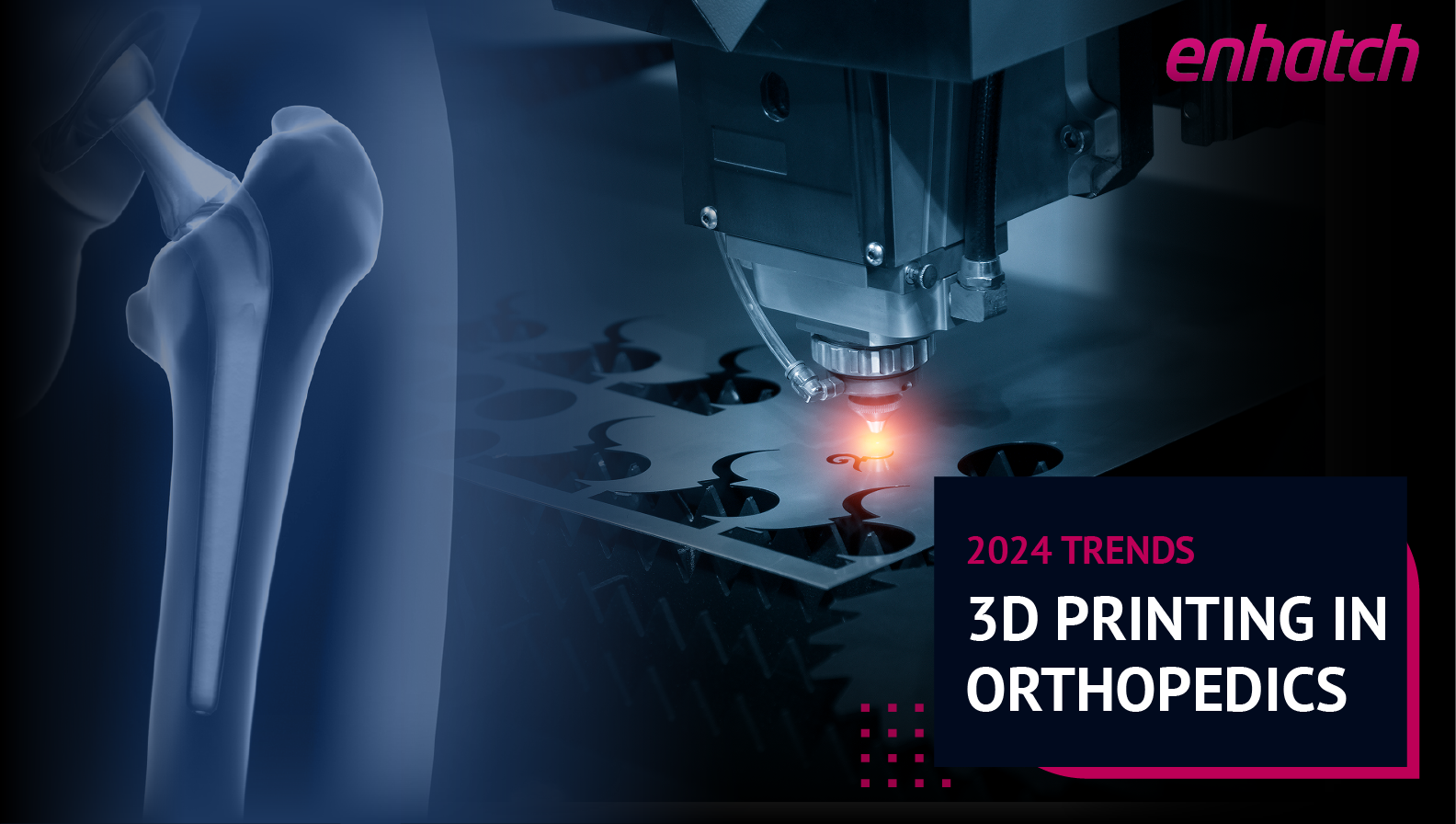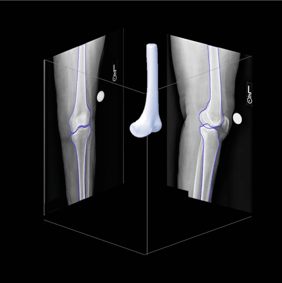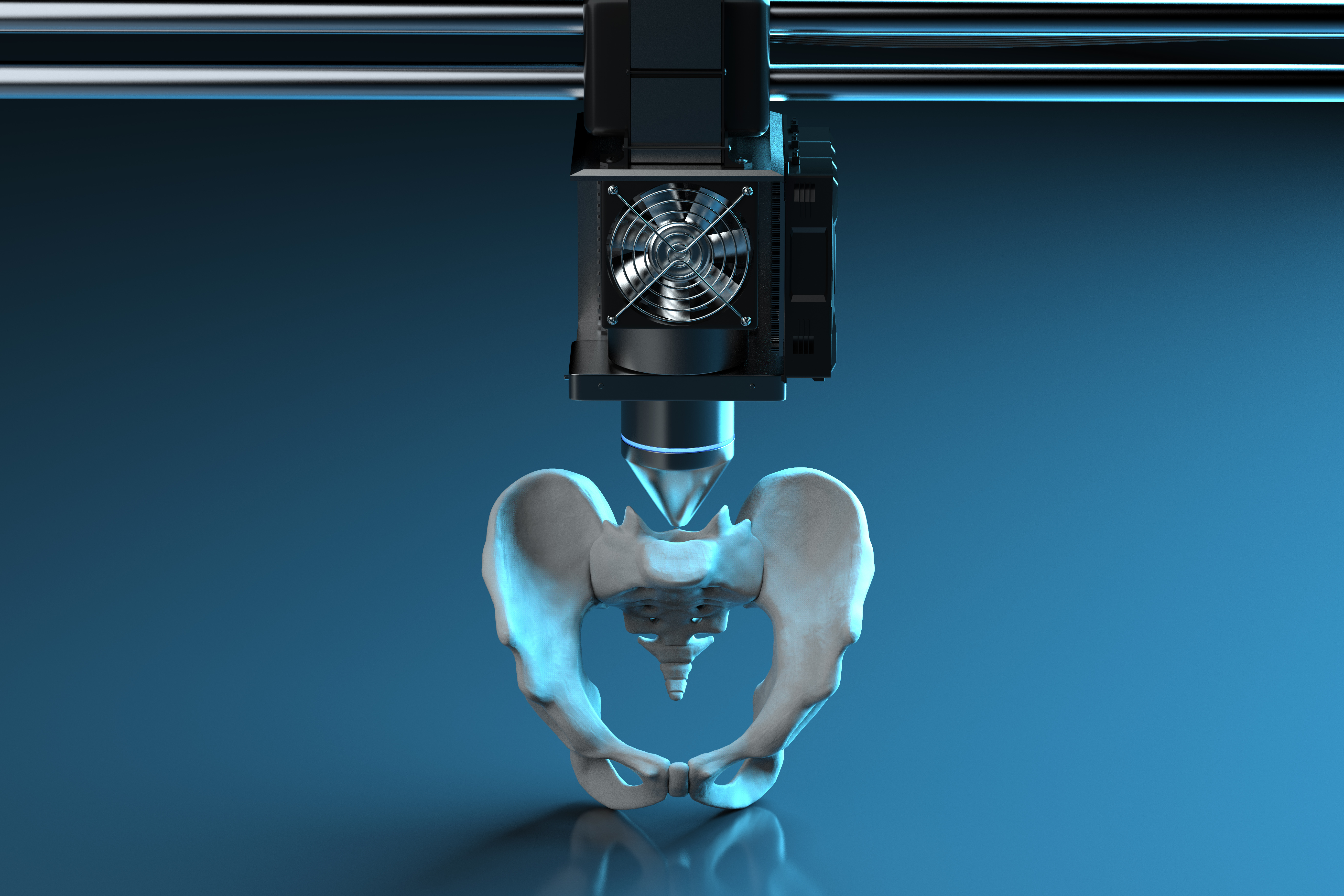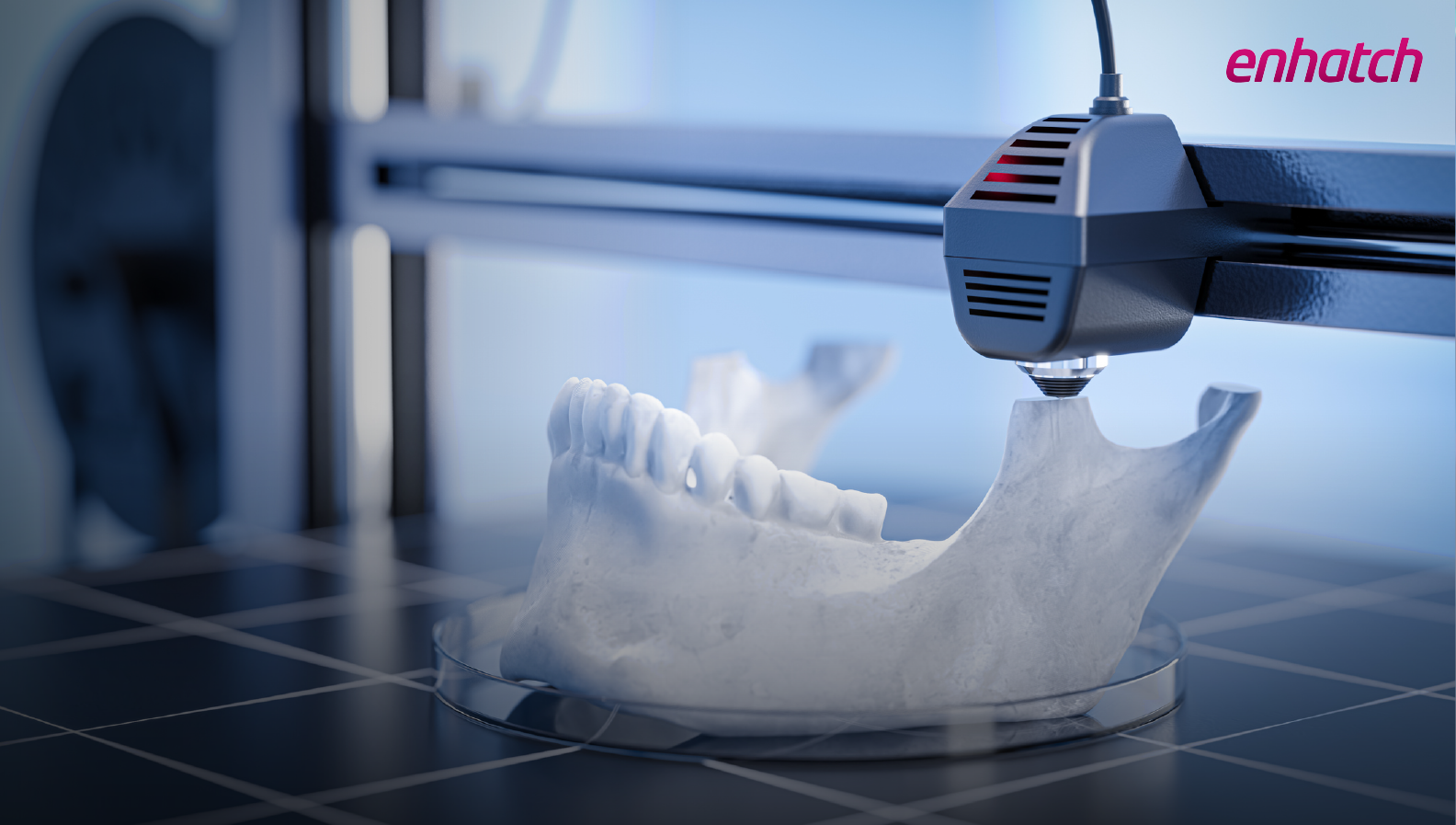2024 trends: 3D printing in orthopedics

The orthopedic 3D-printed devices market is growing rapidly. The market is projected to grow by USD 1.35 billions at a CAGR of 16.53% from 2023 to 2028. North America alone will drive 40% of this growth.
The surge in demand for personalized implants is one key reason for this growth. 3D printing has progressively moved beyond prototyping into the delivery of personalized, patient-specific solutions.
As we look towards 2024 and beyond, we have identified some key trends in 3D printing that can redefine how orthopedic care is delivered.
The growing use of 3D printing at points of care
In 2024, we expect an increase in the trend of integration of 3D printing at the point of care. 3D printing at the point of care enables the on-demand and on-site printing of patient-specific instruments and devices. This approach may help healthcare providers increase efficiency and reduce costs.
Since 2010, the adoption of centralized 3D printing for point-of-care manufacturing has been on the rise, with the number of hospitals utilizing this technology growing from just 3 to 119 by 2019. In 2022, this figure likely approached 400. In 2024 and beyond, we anticipate a continued upward trajectory in this transformative trend.
While there may be upfront costs associated with implementing 3D printing technology, the long-term benefits, such as reduced inventory costs, minimized waste, and streamlined processes, contribute to overall cost efficiency for ASCs and hospitals. This also helps increase supply chain resilience by reducing the risk of supply chain disruptions.
Companies to watch in this space: 3D Systems, Enhatch, Materialise, Synopsys.
AI to boost surgical planning for 3D-printed implants and instruments
Advancements in 3D preoperative planning software and AI will be game changers. These can significantly enhance the efficiency of 3D-printed implants and instruments in 2024 and beyond.
These innovative solutions can potentially:
- Enable faster and more accurate modeling of implants and surgical guides.
- Reduce turnaround times for 3D-printed implants and guides to reach surgeons.
Another exciting area of advancement is the creation of detailed 3D anatomic models from X-rays. Traditionally, CT scans have been the primary source for generating 3D models due to their precise imaging capabilities.
With sophisticated algorithms and software enhancements, X-rays can now be used for this purpose. This innovation is especially beneficial for patients as it:
- Lowers healthcare costs as an extra CT scan is not required.
- Reduces radiation exposure.
- Saves time and inconvenience.

Companies to watch in this space: Enhatch, RSIP Vision, Materialise, Axial 3D.
Addressing patient-specific challenges through metal printing
The orthopedic sector has been a pioneer in adopting 3D printing. 3D printing is critical for crafting patient-specific medical devices and instruments. Among the many innovations, metal printing stands out as a transformative technology. Metal printing can address unique patient challenges as well as supply chain issues.
Methods like Laser Powder Bed Fusion (LPBF) have transformed the production of orthopedic implants. This technology supports the creation of devices tailored to the individual's anatomy that can potentially result in:
- Better fit implants.
- Increased patient comfort.
- Faster recovery times.
Additionally, metal printing is a solution to the ongoing challenges posed by supply chain disruptions and inflation. By enabling local on-demand manufacturing of implants and devices, metal printing mitigates the risks associated with global supply chain dependencies. This ensures:
- Timely availability of essential medical devices.
- Contributes to cost savings for both manufacturers and patients.
For instance, restor3D has leveraged this technology to commercialize patient-specific femoral implants. The technology has significantly reduced costs and improved mechanical properties compared to traditional casting methods. With the acquisition of Conformis, restor3D can now successfully create 3D-printed femoral implants at a fraction of the traditional cost. The company has demonstrated the potential of metal printing in delivering clinically differentiated and cost-effective orthopedic solutions.
With ongoing advancements, metal printing is poised to transform orthopedic surgery further. This technology can help make personalized treatment more accessible and efficient.
Companies to watch in this space: 3D Systems, restor3D.
Material innovations to expand 3D printing applications
Orthopedics has been leading the way in leveraging 3D printing to manufacture devices and instruments. Material innovations can further expand 3D printing applications in orthopedics.
Biodegradable materials is an exciting area where material advancements can potentially improve healthcare outcomes. Biodegradable materials help repair soft tissue, as the body post-healing can absorb them.
Implantable polymers are another area of potential interest. Traditionally, 3D printing using polymers has been primarily used for instrumentation (for example, cutting guides). However, 3D printing of implants on polymers is an area that could offer some potential benefits in the longer term.
As we look ahead, 3D bioprinting has immense potential in producing on-demand body tissue, bones, and organs. There has already been some pioneering work in this space in the last few years. This field is now primed to unlock even greater potential.
The application of 3D bioprinting for bone and cartilage tissue engineering can potentially have a significant impact on the field of orthopedics. The capability to create 3D structures that mimic the microstructure of bones could improve outcomes in bone repair procedures. It has the potential to reduce some of the adverse effects associated with current bone grafting techniques.
3D Systems is an example of a company making remarkable progress in 3D bioprinting. They're now using this expertise to develop patient-specific functioning 3D-printed organs and tissues. Their Print to PerfusionTM process enables high-resolution scaffold printing, which can then be infused with living cells to form tissues. 3D Systems has also partnered with United Therapeutics Corporation to make significant advances in the development of next-generation bioprinting solutions for lung scaffolds.
Companies to watch in this space: 3D Systems, restor3D.
Final thoughts/Key takeaways
- 2024 will be a year of rapid advancements and growth of 3D printing in orthopedics.
- Expected increased adoption at point-of-care efficiency becomes paramount.
- Software advancements and AI will speed up access to 3D-printed implants and guides.
- Material innovations will continue to expand the applications of 3D printing in orthopedics.
Sources
- Orthopedic 3D Printed Devices Market Analysis North America, Europe, Asia, Rest of World (ROW) - US, Canada, Germany, UK, China - Size and Forecast 2024-2028 retrieved from Technavios website: Visit page.
-
3D bioprinting for orthopaedic applications: Current advances, challenges and regulatory considerations retrieved from Science direct website: Visit page.



